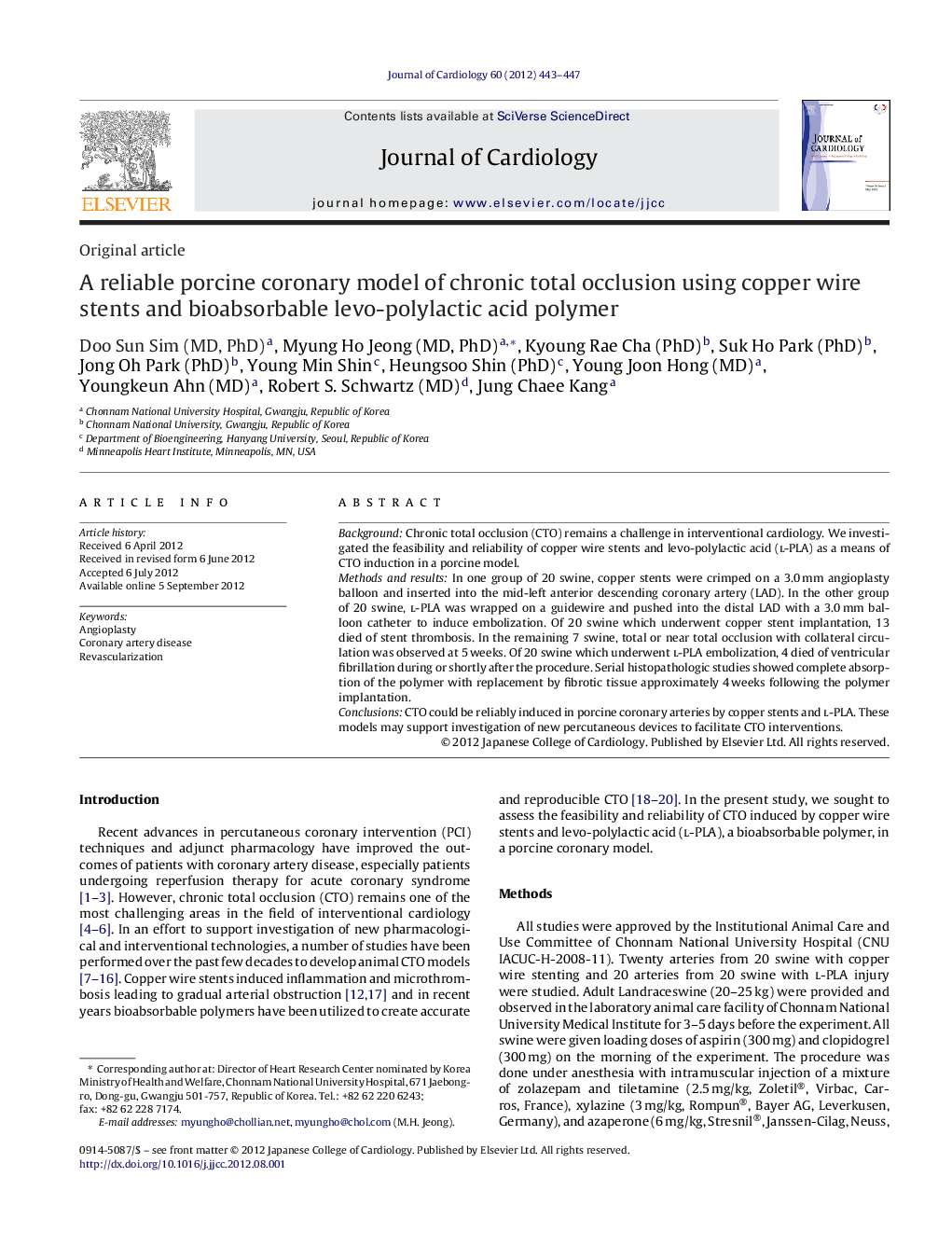| Article ID | Journal | Published Year | Pages | File Type |
|---|---|---|---|---|
| 2963081 | Journal of Cardiology | 2012 | 5 Pages |
BackgroundChronic total occlusion (CTO) remains a challenge in interventional cardiology. We investigated the feasibility and reliability of copper wire stents and levo-polylactic acid (l-PLA) as a means of CTO induction in a porcine model.Methods and resultsIn one group of 20 swine, copper stents were crimped on a 3.0 mm angioplasty balloon and inserted into the mid-left anterior descending coronary artery (LAD). In the other group of 20 swine, l-PLA was wrapped on a guidewire and pushed into the distal LAD with a 3.0 mm balloon catheter to induce embolization. Of 20 swine which underwent copper stent implantation, 13 died of stent thrombosis. In the remaining 7 swine, total or near total occlusion with collateral circulation was observed at 5 weeks. Of 20 swine which underwent l-PLA embolization, 4 died of ventricular fibrillation during or shortly after the procedure. Serial histopathologic studies showed complete absorption of the polymer with replacement by fibrotic tissue approximately 4 weeks following the polymer implantation.ConclusionsCTO could be reliably induced in porcine coronary arteries by copper stents and l-PLA. These models may support investigation of new percutaneous devices to facilitate CTO interventions.
